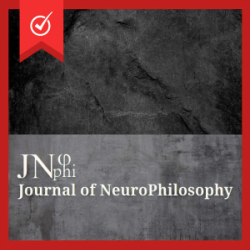The Selfhood-Components Dynamics in the Spectrum of Discrete Normotypical and Pathological Modes
The Selfhood-Components Dynamics in the Spectrum of States
Abstract
In this first-of-its-kind neurophenomenological study we investigated the dynamic configuration and the levels of variability of the “Self”-, “Me”-, and “I”- components that comprise a complex experiential Selfhood across 16 distinct modes covering a range of healthy-normal, altered, and pathological brain states. The phenomenology was addressed by examining the mental structures of subjective self-experience, and for the neurophysiological counterpart, we used electroencephalogram analysis to gather data on three subnets of the self-referential brain network that correspond to the three components of Selfhood. This methodological approach allowed us to uncover peculiarities and generalities in the dynamic of the Selfhood triad across a wide range of modes that could not be seen in a single study. We showed that any given Selfhood state is determined by varying proportions of “Self”, “Me”, and “I”-components depending on the phenomenological manifestation of a particular mode. Furthermore, we demonstrated that the “Self”-component has more leeway in expressing various pathological modes while having a very narrow window for variance in norm. The “I”-component, on the other hand, exhibits the opposite tendency, with a wide range of normal modes and only a narrow window for true pathological expression. Finally, the “Me”-component expresses a position intermediate between the “Self”- and “I”-components (though closer to the “I”-component). The findings are discussed with an emphasis on their theoretical, conceptual, philosophical, and clinical implications.
Keywords:
Triad Model of Selfhood, Self-Me-I, Self-Referential Brain Network (SRN), Default-Mode Network (DMN), Subjective Sense of Self, First-Person Perspective, Electroencephalogram (EEG), Alpha Rhythm, Operational Synchrony, Functional Connectivity, Depersonalization Disorder (DD), Depression, Meditation, Depression, Post-Traumatic Stress Disorder (PTSD), Schizophrenia, Vegetative State (VS), Minimally Conscious State (MCS), Unresponsive Wakefulness Syndrome (UWS)Downloads
Metrics
References
Allport GW. Pattern and Growth in Personality. New York, NY: Holt, Rinehart & Winston, 1961.
Ataria Y. Traumatic memories as black holes: A qualitative-phenomenological approach. Qualitative Psychology 2014; 1: 123-140.
Baumeister RF. Suicide as escape from self. Psychological Review 1990; 97(1): 90–113.
Beck AT. The evolution of the cognitive model of depression and its neurobiological correlates. American Journal of Psychiatry 2008; 165: 969–977.
Berkovich-Ohana A, Dor-Ziderman Y, Trautwein F-M, Schweitzer Y, Nave O, Fulder S and Ataria Y. The hitchhiker’s guide to neurophenomenology—the case of studying self boundaries with meditators. Frontiers in Psychology 2020; 11: 1680.
Downloads
Published
How to Cite
Issue
Section
Categories
License
Copyright (c) 2023 Andrew Fingelkurts, Alexander Fingelkurts, Tarja Kallio-Tamminen

This work is licensed under a Creative Commons Attribution-NonCommercial-ShareAlike 4.0 International License.
Authors continue to hold copyright with no restrictions.




